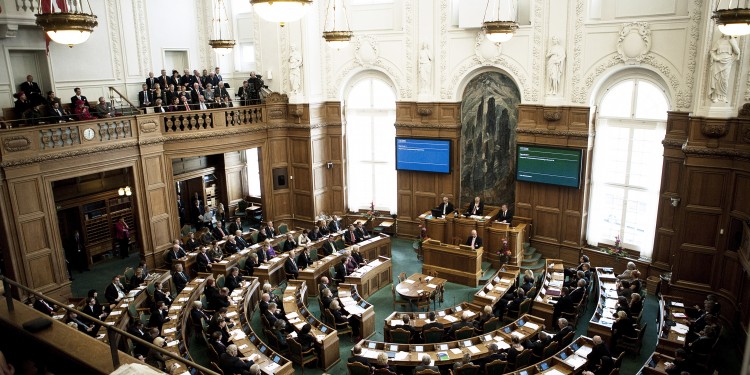Danish Parliament opens with a minority government

The first tuesday in October is traditionally the day when the Danish Parliament, Folketinget, officially opens after the summer break. The coming parliamentary session is one where Folketinget is again back in power after a number of years where Danish governments had been able to assure their majority through bloc politics.
By Bente D. Knudsen
Lars Løkke Rasmussen’s minority government does not have that luxury with only 34 mandates of the required 90. This is why there can easily be a number of interesting constellations with both a majority with the government as well as against it during the coming months of party play.
The need for Lars Løkke Rasmussen to seek agreements across political party lines is a result of the election, where Dansk Folkeparti, despite a huge increase in it’s number of parliamentary seats decided not to be part of the government. Instead Venstre was left on its own in a minority government forced to look for a majority either to the left or right, or a combination of both.
In the former governments, both the recent one (2011-2015) with Helle Thorning-Schmidt as Statsminister leading a coalition of rød bloc (left wing parties), as well the former many years of Anders Fogh-Rasmussen’s coalition of blå bloc (right wing parties), due to their coalition giving them a 90 mandate majority, they first of all had to negotiate with themselves and not necessarily with the other parties in Folketinget. This is no longer the case, and the often acclaimed negotiation skills of Lars Løkke Rasmussen and his 17 Venstre ministers will be needed to assure a 90 mandate majority for the coming legislative proposals.
The new chairman of Socialdemokratiet, Mette Frederiksen, has during the past months made it clear, that her party is prepared to take responsibility, meaning that she is open to negotiations with Lars Løkke Rasmussen in order to assure the needed majority on different subjects that her party wishes to influence. She proved her point when she yesterday joined the agreement, making it more difficult to achieve Danish citizenship, made between the five parties, Venstre, Socialdemokratiet,Liberal Alliance, De Konservative and Dansk Folkeparti.
Folketinget, the Danish Parliament has 179 seats and it takes 90 seats ( in Danish mandater) for a majority vote.
Red parties:
- S: Socialdemokraterne – social democratic party (47)
- RV: Radikale Venstre – liberal-democratic party; more liberal about economics and immigration, more social-democratic about welfare state issues (8)
- Enhedslisten: radical left-wing party with a communist streak (14)
- SF: Socialistiske Folkeparti – radical left-wing, green party (7)
- Alternativet: new green party, splinter party from Radikale Venstre (9)
Blue parties:
- Venstre: liberal party (34)
- Konservative: conservative party (6)
- Dansk Folkeparti: right-wing, pro-welfare state, anti-immigration (37)
- Liberal Alliance: radical-liberal party (13)

